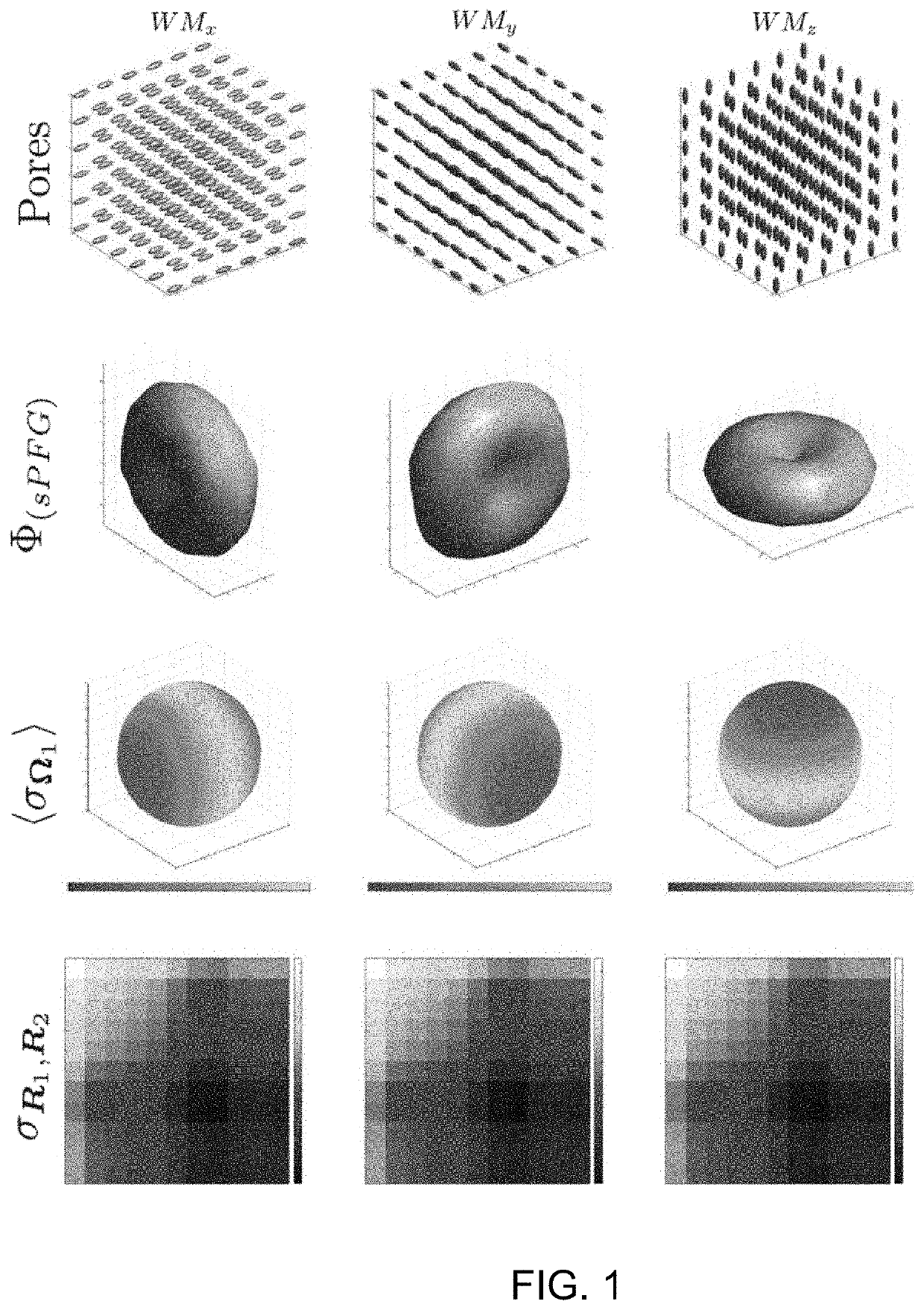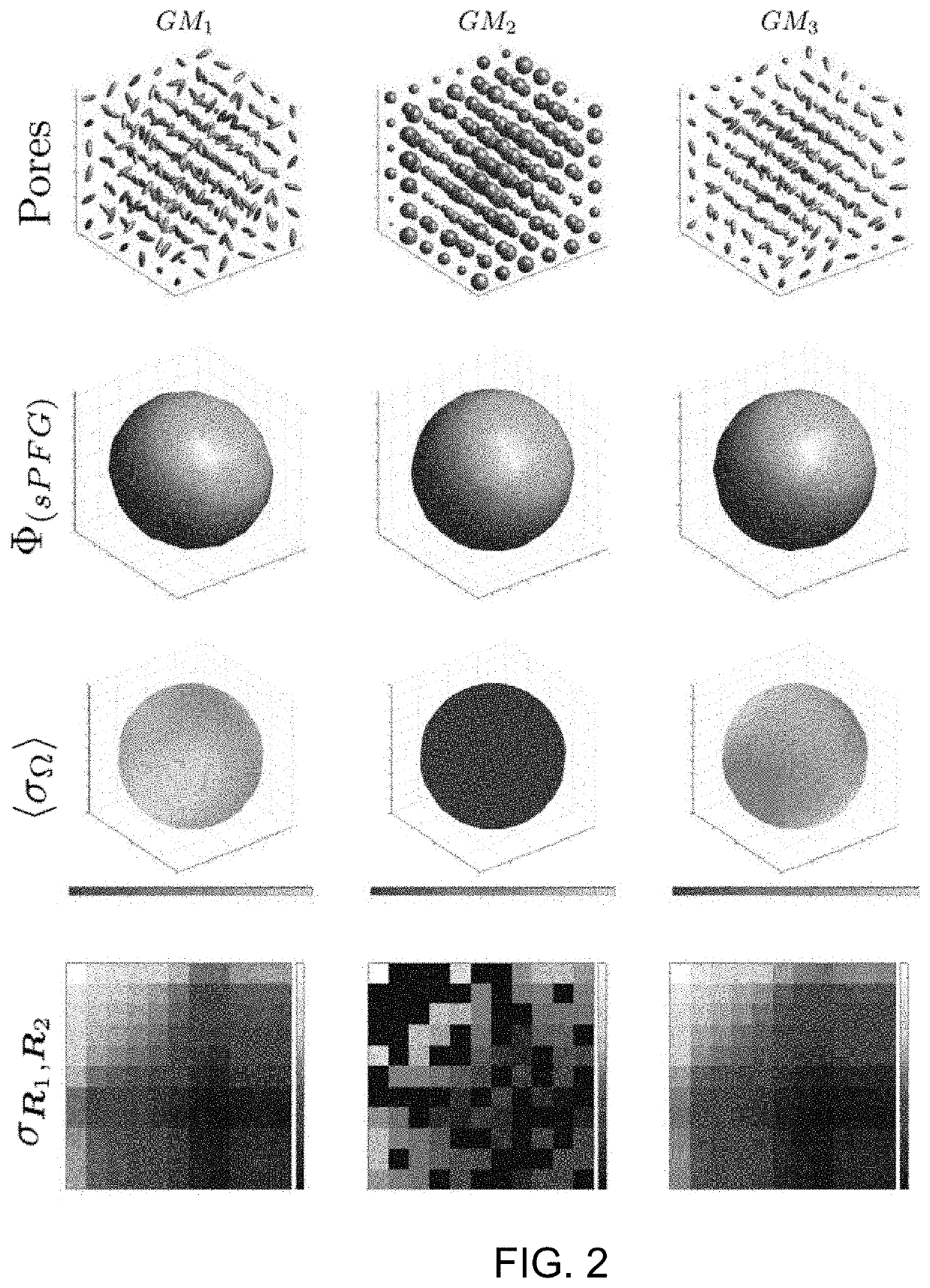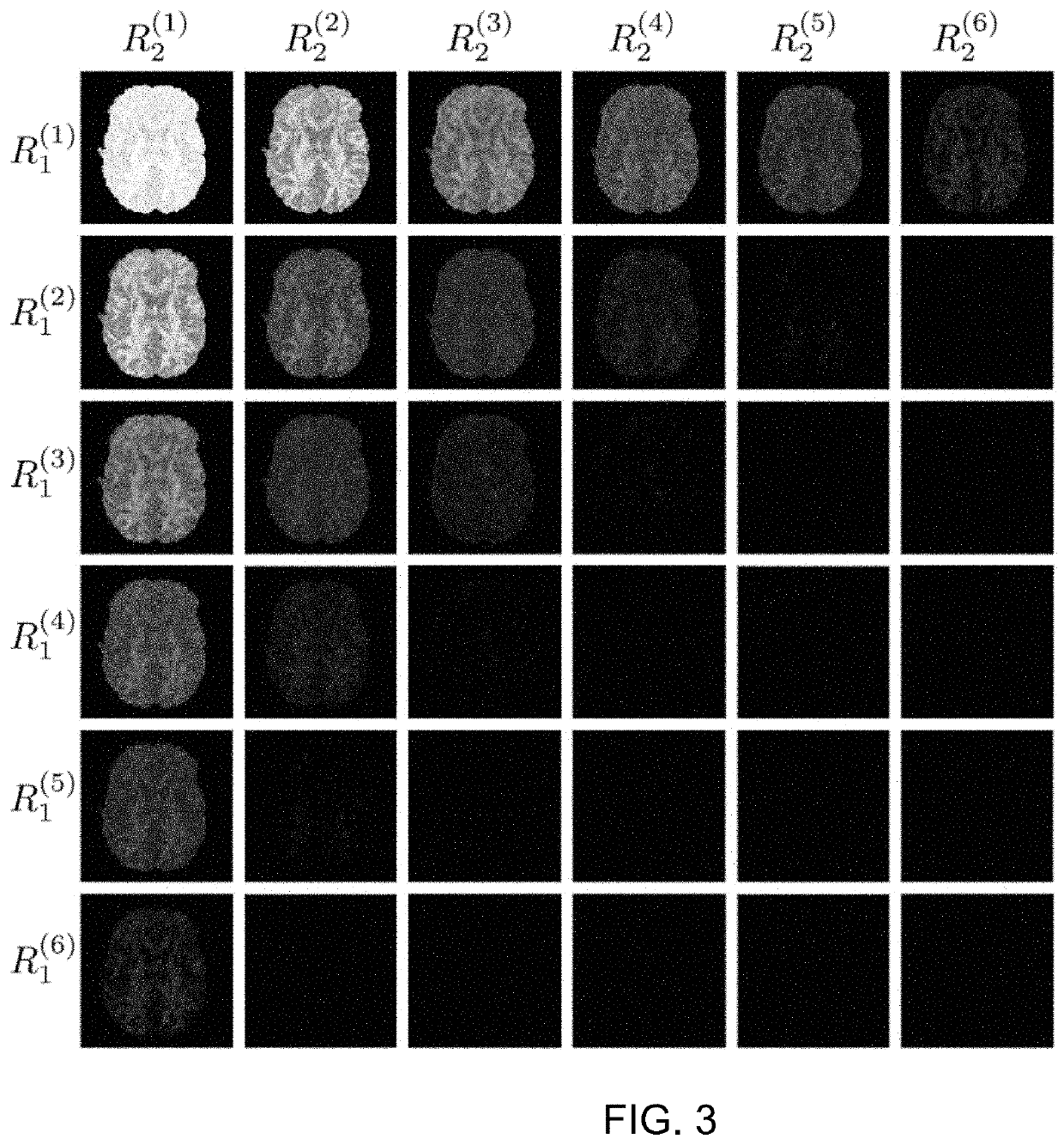Joint estimation diffusion imaging (JEDI)
a diffusion imaging and joint estimation technology, applied in the field of joint estimation diffusion imaging, can solve the problems of limiting the ability of reliable estimation, limiting the utility of both research and clinical applications, and prone to errors in the standard art of both methods, and achieve the effect of convenient implementation
- Summary
- Abstract
- Description
- Claims
- Application Information
AI Technical Summary
Benefits of technology
Problems solved by technology
Method used
Image
Examples
example 1
xel Simulation
[0080]An illustrative example of DiTSI is provided by simulating the signal from a single voxel with structures composed of idealized WM and GM geometries. The voxel diffusion characteristics were constructed in a similar fashion as disclosed by Özarslan, et al., J. Chem Phys. 2009; 130:104702 (incorporated herein by reference) by assuming that the voxel is discretized into p equal sections in each direction and thus p3 cubic subvolumes (or “pores”), each of which contained a simple ellipsoidal diffusion profile characterized by a real symmetric 3×3 diffusion tensor characterized by the three principal eigenvectors and their associated eigenvalues {λ1, λ2, λ3}. The simulation input allowed arbitrary manipulation of the relative eigenstructure of these ellipsoids, facilitating the generation of various “tissue” models. For illustrative purposes, mitigation of angular sampling discretization provides more informative examples and so a large number of unique diffusion ang...
example 2
on of DiTSI to Human dPFG Data
[0085]Acquisition and reconstruction parameters: To assess the translation of DiTSI into real human applications, we developed a modified version of the Extended Hybrid-space SENSE for EPI (EHSS-EPI,) pulse sequence able to collect sPFG and dPFG encoding in both the original dual spin echo (dPFG-DSE) and the single spin echo (dPFG-SSE) implementation. This method uses an off-resonance and eddy current corrected joint interleaved blip-up / down reconstruction and provides an efficient method for fast and accurate (i.e., distortion-free) acquisition, which will be critical for practical applications. Initial tests revealed that the dPFG-SSE version had significantly better signal-to-noise than the dPFG-DSE version and thus was the method used in the human studies. All data were collected on a General Electric (GE) Discovery MR750 3.0T Whole Body clinical imaging system using a 32-channel from NOVA Medical Devices (Wilmington, Mass.).
[0086]The dPFG sampling ...
example 3
on of JEDI to Human dPFG and sPFG Data
[0089]Acquisition and reconstruction parameters: To test the JEDI method, sPFG diffusion acquisition data was combined with the dPFG data acquired using the same EHSS-EPI pulse sequence (and reconstruction) described above. The protocol acquires 3 shells at b-values of b=(1000, 2000, 3000 s / mm2 with the number of directions being 30, 45, and 60, respectively. The data acquisition parameters included slice thickness thk=2 mm, FOV=20 cm, TE=119 ms, TR=4.0 s, matrix size=100×100×72 with a SENSE factor of 4. The imaging time was 16 min. A standard high resolution anatomical (HRA) dataset was also collected using an inversion recovery prepared MP-RAGE protocol, 1.2 mm sagittal slices (S / I direction), Locs / slab=170, number of slabs=1, FOV=26 cm, TR / TE / FA=7 ms / 3 ms / 8°, Inversion time TI=900 ms, matrix size 256×256, BW=31.25 kHz, NEX=1.
[0090]Results: The JEDI method, as an extension of the GO-ESP method, produces the same output: local anisotropy define...
PUM
 Login to View More
Login to View More Abstract
Description
Claims
Application Information
 Login to View More
Login to View More - R&D
- Intellectual Property
- Life Sciences
- Materials
- Tech Scout
- Unparalleled Data Quality
- Higher Quality Content
- 60% Fewer Hallucinations
Browse by: Latest US Patents, China's latest patents, Technical Efficacy Thesaurus, Application Domain, Technology Topic, Popular Technical Reports.
© 2025 PatSnap. All rights reserved.Legal|Privacy policy|Modern Slavery Act Transparency Statement|Sitemap|About US| Contact US: help@patsnap.com



